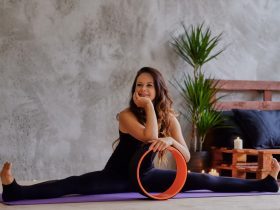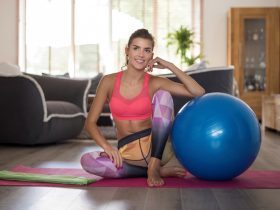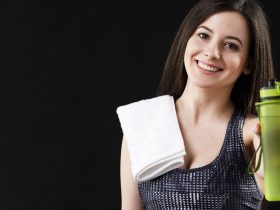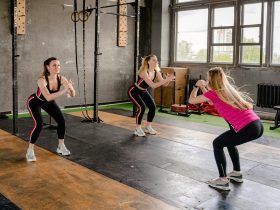Introduction to Exercise Ball:
An exercise ball, otherwise called a steadiness ball or Swiss ball, is an adaptable wellness device that can be utilized for many activities to further develop strength, equilibrium, adaptability, and stance. Initially created for active recuperation and recovery purposes, practice balls have acquired fame in exercise centers, wellness focuses, and home exercises because of their viability and reasonableness.
Key Highlights of Exercise Ball:
Adaptability:
Practice balls can be utilized for various activities focusing on various muscle gatherings, including center activities, upper and lower body strength preparation, equilibrium and soundness activities, and extending schedules.
Center Commitment:
One of the essential advantages of utilizing an exercise ball is its capacity to connect with the center muscles during exercises. The unsteady surface of the ball requires steady enactment of the center muscles to keep up with equilibrium and solidness, prompting further developed center strength and soundness over the long run.
Customizable Trouble:
Practice balls come in different sizes, with bigger balls giving greater dependability and more modest balls offering more noteworthy tests, this permits clients to change the trouble of their exercises in light of their wellness level and objectives.
Versatile and Reasonable:
Practice balls are lightweight and simple to move, making them ideal for home exercises, outside meetings, or even travel. They are somewhat modest compared with other wellness hardware, making them open to individuals with various financial plans.
Determinations of Exercise ball:
Size:
Practice balls are accessible in various sizes, normally going from 45 cm to 75 cm in width. The appropriate size for a person is determined by their level and the type of activity they intend to conduct.
Material:
Most exercise balls are made of sturdy, anti-bursting PVC plastic that can withstand heavy use and provide substantial support during activities. Some higher-quality models may feature anti-slip or polished surfaces to boost grip and strength.
Weight Limit:
Practice balls accompany weight limits going from two or three hundred pounds to north of 1,000 pounds, contingent upon the size and nature of the ball. It’s fundamental to pick a ball with a weight limit that obliges your body weight and the force of your exercises.
Expansion:
Practice balls require expansion utilizing a vacuum apparatus, which is regularly included with the ball, It’s essential to swell the ball to the prescribed size and immovability to guarantee ideal execution and well-being during exercise.

The following are five successful healthy activities you can perform utilizing an exercise ball:
1. Exercise Ball Crunches:
• Sit on the exercise ball with your feet level on the floor, and knees twisted at a 90-degree point.
• Fold your arms over your chest or spot your hands behind your head.
• Connect with your center muscles and gradually recline until your lower back is uphill by the ball.
• Breathe out as you contract your abs to lift your middle towards the roof.
• Breathe in as you lower your middle down to the beginning position.
• Rehashed for 10-15 redundancy.
2. Exercise on Ball Pike:
• Start in a board position with hands on the floor and shins on the exercise ball.
• Use your center muscles to lift your hips toward the roof and move the ball to you hands.
• During development, keep your legs straight and your back level.
• Stand solid on the pike footing for a moment, then slowly lower your hips back to the beginning position.
• Rehashed for 10 to 12 redundancies.
3. Exercise Ball Hamstring Twists.
• Lie on your back, feet on the exercise ball, and arms at your sides.
• Lift your hips off the floor to make a straight line from your shoulders to your knees.
• Keep your center drawn in and your hips lifted as you twist your knees and roll the ball toward your rear end.
• Stretch out your legs to move the ball back to the beginning position.
• Rehash for 12-15 reiterations.

. Activity Ball Russian Turns:
• Sit on the exercise ball with your feet level on the floor and knees bowed at a 90-degree point.
• Hold a free weight or medication ball with two hands at chest level.
• Recline marginally, captivating your center muscles for soundness.
• Turn your middle to one side, bringing the load towards the floor adjacent to your hip.
• Get back to the middle and afterward turn to one side, bringing the load towards the floor adjacent to your other hip.
• Keep exchanging sides for 10-12 redundancies on each side.
5. Exercise Ball Extension:
• Lie on your back with your feet level on the floor and your calves lying on top of the exercise ball.
• Lift your hips towards the roof, connecting with your glutes and center muscles.
• Stand firm on the extension foothold for a couple of moments, then, at that point, lower your hips back down to the beginning position.
• Rehash for 12-15 redundancies.
Conclusion About Exercise Ball:
All in all, the exercise ball is an adaptable and viable wellness device that offers various advantages for strength, equilibrium, adaptability, and stance. With its movable trouble levels, versatility, and reasonableness. It is a magnificent expansion to any home rec center or exercise routine daily practice, by integrating exercise ball practices into your wellness routine and following legitimate security insurance, you can partake in a full-body exercise that advances general well-being and prosperity.
FAQs about Exercise Ball:
1. What size practice ball do I really want?
The size of the exercise ball depends upon your level. As an overall principle, pick a ball size that permits you to sit on it with your knees twisted at a 90-degree point and your feet level on the floor.
2. Are exercise balls reasonable for novices?
activities. Begin with fundamental activities and step-by-step progress to further developed developments as you develop fortitude and security.
Indeed practice balls are reasonable for fledglings, as they give a stable yet testing surface for different
3. Can I utilize an exercise ball as an office seat?
Indeed, utilizing an exercise ball as an office seat can assist with further developing stance, center strength and generally speaking solace, notwithstanding. It’s fundamental to keep up with a legitimate sitting stance and enjoy ordinary reprieves to stay away from exhaustion and inconvenience.
4. Are there any security safety measures while utilizing an exercise ball?
To guarantee well-being while utilizing an exercise ball, consistently take a look at the ball for indications of harm, or wear before each utilization. Try not to utilize the ball on elusive, or lopsided surfaces and never overinflate the ball past its suggested limit.
5. What activities could I at any point do with an exercise ball?
Practice balls can be utilized for a large number of activities, including crunches, boards, spans, squats, and push-ups, and the sky is the limit from there. They can likewise be integrated into Pilates, yoga, and non-intrusive treatment schedules to change it up.














Leave a Reply